From Script to Screen: Exploring the Evolution of Iconic Movie Scenes
Film is often touted as the most collaborative art form, where a multitude of creative minds—screenwriters, directors, cinematographers, and editors—come together to bring a singular vision to life. Yet, one of the most compelling aspects of filmmaking is how a scene evolves from a mere script on a page to an iconic moment that resonates with audiences for generations. This article delves into the transformative journey of some of cinema’s most memorable scenes, illustrating the delicate balance between intention and interpretation in the filmmaking process.
The Genesis: Scriptwriting
Every cinematic masterpiece begins with a script—a foundational document that carries a film’s narrative, dialogue, and structure. The beauty of screenwriting lies in its inherent malleability. For instance, consider one of the most famous opening scenes in cinema history: the haunting sequence in Jaws (1975). The original script featured a straightforward setup, but director Steven Spielberg reimagined the moment with amplified tension. His decision to introduce the shark gradually—through the perspective of its victims—transformed the scene into an unforgettable introduction that set the tone for the entire thriller.
Similarly, in Pulp Fiction (1994), Quentin Tarantino’s wisecracking dialogue on the page became electrifying through actors’ performances and an unconventional narrative structure. The scene of hitmen Vincent and Jules discussing the nuances of fast-food choices in Europe became instantaneously iconic, illustrating how dialogue can shift from script to an unforgettable moment filled with character and humor.
From Rehearsal to Realization
Once the script is set, the actors step into their roles, and the collective vision begins to take shape in rehearsals. It is in this preparatory phase that actors bring their interpretations to a scene, often leading to notable changes from the original script. In The Godfather (1972), Marlon Brando’s improvisational choices and unique delivery as Don Vito Corleone added layers of depth to his character’s iconic moments, particularly the chilling “I’m gonna make him an offer he can’t refuse.”
Directors often encourage this exploration, aiming to peel back layers in performances that may not have been explicitly detailed in the screenplay. The invigoration of the scene through an actor’s improvisation can become a storytelling cornerstone, affecting how audiences perceive characters and their motivations.
Cinematic Craft: Directing and Cinematography
The transformation from script to screen unfolds dramatically in the hands of directors and cinematographers. The carefully chosen camera angles, lighting, and pacing can elevate a scene to iconic status. Take Alfred Hitchcock’s Psycho (1960)—the infamous shower scene, originally just words on a page, was visually and emotionally sculpted by Hitchcock’s meticulous planning. Using rapid cuts, dramatic music by Bernard Herrmann, and careful framing, Hitchcock turned a simple murder into an unforgettable cinematic experience, ingraining it in the cultural lexicon.
In contemporary cinema, the use of technology can also alter the fabric of a scene. Avatar (2009) pioneered performance capture technology, allowing director James Cameron to craft breathtaking landscapes that enriched emotional depth. The filming process transitioned traditional techniques into a new era, expanding the potential for how scenes could visually impact audiences.
Post-Production: The Final Touches
Once shooting concludes, the editorial process begins, breathing fresh life into the raw footage. Editors wield immense power in shaping a film, often crafting the rhythm and emotional punch of scenes. The iconic scene in Rocky (1976) where Rocky runs up the steps of the Philadelphia Museum of Art—infused with Bill Conti’s triumphant score—was made even more inspiring through careful editing and sound design.
Sound editing, in particular, can transform a scene’s impact dramatically. The echoing footsteps in Inception (2010) during the “climbing of the totem” scene create a tension that lingers in audiences’ minds long after the credits roll. This synthesis of sound and visual components highlights the multi-faceted approach needed to craft memorable moments that live on in viewers’ hearts.
Cultural Impact and Legacy
Finally, iconic scenes transcend their original filmic contexts, often shaping popular culture and inspiring future filmmakers. The “Here’s Johnny!” moment in The Shining (1980), crafted through a combination of Jack Nicholson’s improvisation, director Stanley Kubrick’s vision, and dynamic cinematography, has been referenced countless times, altering the landscape of horror cinema forever.
In an age buoyed by digital platforms and social media, scenes like the “I am your father” revelation from Star Wars: The Empire Strikes Back (1980) become collective memory, highlights in what one could call the “shared human experience” of cinema. Audiences quote, parody, and pay homage to these scenes, a testament to their longevity and powerful resonance.
Conclusion
The evolution of iconic movie scene—from script to screen—is a multifaceted journey that embodies the spirit of collaboration in filmmaking. Every choice, from the initial written word to the final cut, contributes to a moment that has the potential to leave an indelible mark on culture. As filmmakers continue to innovate and audiences engage with stories anew, we can expect the magic of cinema to keep evolving. Whether through the thrill of suspense, humor, or poignant drama, the transformation of simple words into powerful visuals will undoubtedly captivate future generations.


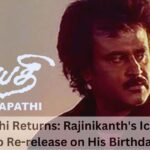
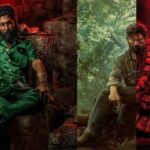
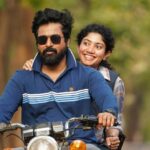









One thought on “From Script to Screen: Exploring the Evolution of Iconic Movie Scene”